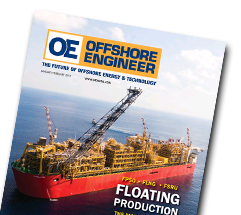Helix Energy Solutions' semi-submersible vessel Helix Q7000 which earlier this week arrived in Port Taranaki, New Zealand, ahead of its planned decommissioning work at the Tui offshore field, has already set off from the port ahead of a forecasted significant storm event, after getting crewed, stocked and fuelled for an early departure.
High winds, a storm surge, and long-period waves are predicted for the region from overnight tonight (Thursday) as an intensifying low-pressure system tracks across the Tasman Sea towards the North Island, Port Taranaki said in a statement.
“We expect high north-east winds of 50 knots, a north-west swell of 5.2m, and an extremely long period wave event which, combined, means for safety reasons we have made the decision to exclude commercial vessels from the port from 6pm today,” Port Taranaki general manager operations Alex Park said.
This includes Helix Energy Solutions’ specialist well intervention vessel, which departed port about 2.30pm local time Thursday and will continue preparations at sea to begin work on the third stage of the Tui oil field decommissioning project.
The Q7000 arrived at Port Taranaki on Tuesday to carry out a crew exchange and to load supplies for the approximate three-month campaign, which is led by Australia's Ministry of Business, Innovation and Employment.
According to Port Taranaki, although the Helix Q7000's stay in port was cut short, a combined effort by Port Taranaki, Elemental Group and a large number of sub-contractors enabled the vessel to be ready to leave ahead of schedule.
“The weather is what the weather is,” said Nick Jackson, director of Elemental Group, which is providing project management assistance of New Zealand operations for Helix Energy Solutions.
“Thanks to the great work of Team Taranaki, in the brief time the vessel was in port we managed to clear customs and biosecurity checks, bunker fuel, change about 70 crew and take on an additional 30, load food supplies, and take on the gear required to get the abandonment campaign underway.
“It was a very busy 48 hours, and everyone did a fantastic job. Many thanks to Port Taranaki for their hospitality.”
Park said despite Q7000’s time at port being reduced, the visit had been a success.
“Shipping is dynamic, and unfortunately, the weather and long-period waves are out of our control. But this is a great example of the skills and ability of the Taranaki region to come together and work safely and quickly to get a result.
“Thanks to all those who worked hard to get the Q7000 ready to depart. She has been an impressive addition to the port and the New Plymouth skyline during the past couple of days, and we wish her well for the decommissioning project.”
 Subscribe
Subscribe









